The earliest map of Uttoxeter, drawn in 1629, records that the home of Peter Lightfoot, a local man of letters, stood on this site. Lightfoot’s house had previously been the Old Swan inn. Alongside was another timber-framed building, owned and occupied by Thomas Salt, which stood, at least partly, on this site.
Prints and text about The Old Swan.
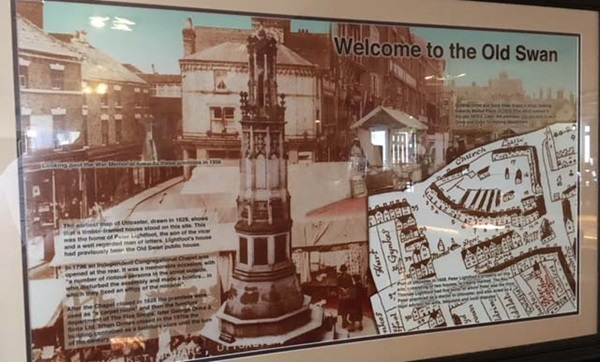
The text reads: The earliest map of Uttoxeter, drawn in 1629, shows that a timber-framed house stood on this site. This was the home of Peter Lightfoot, the son of the vicar and a well-regarded man of letters. Lightfoot’s house had previously been the Old Swan public house.
In 1796 an independent Congregational Chapel was opened at the rear. It was a memorable occasion, with “a number of riotous persons in the street outside, who disturbed the assembly and made a bonfire… in which they fixed an effigy of the minister”.
After the Chapel closed in 1828 the premises were used as “a carpet room” and then the furniture department of The Five Shops, later George Orme & Sons Ltd. When Ormes closed in the 1970s the building continued as a furniture store until the turn of the century.
Prints and text about the Manor House.
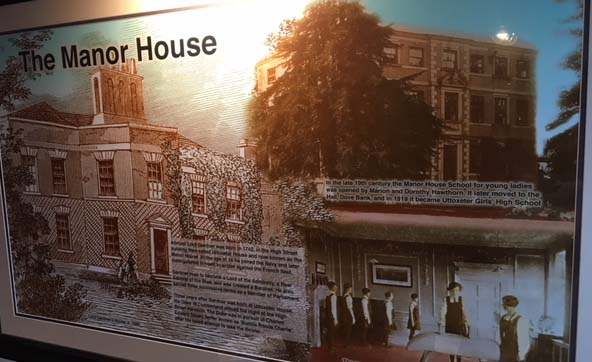
The text reads: Admiral Lord Gardner was born in 1742, in the High Street building then called Uttoxeter House and now known as the Manor House. At the age of 14 he joined the Navy and later distinguished himself in action against the French fleet.
Gardner rose to become a Lord of the Admiralty, a Rear Admiral of the Blue, and was created a Baronet. He also served three successive terms as an MP.
Three years after Gardner was born at Uttoxeter House, the Duke of Cumberland stayed the night at the High Street mansion. The Duke was in pursuit of Charles Edward Stuart, better known as ‘Bonnie Prince Charlie’, after his failed attempt to take the throne.
An illustration and text about poetry and law.
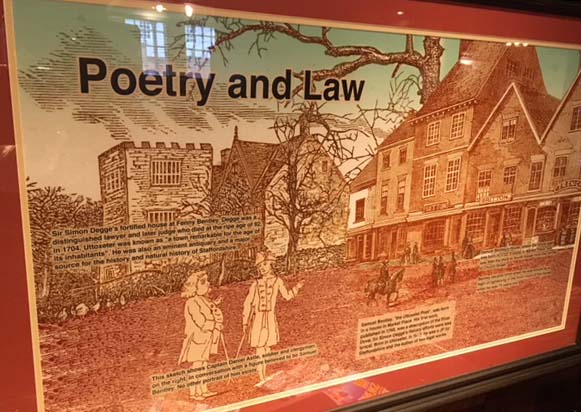
The text reads: Sir Simon Degge’s fortified house at Fenny
Bentley. Degge was a distinguished lawyer and later judge who died at the ripe age of 92, in 1704. Uttoxeter was known as “a town remarkable for the age of its inhabitants”. He was also an eminent antiquary and a major source for the history and natural history of Staffordshire.
This sketch shows Captain Daniel Astle, soldier and clergyman, on the right, in conversation with a figure believed to be Samuel Bentley. No other portrait of him exists.
Samuel Bentley, ”the Uttoxeter Poet”, was born in a house in Market Place. His first work, published in 1768, was a description of the River Dove. Sir Simon Degge’s literary efforts were less lyrical. Born in Uttoxeter, in 1612, he was a JP for Staffordshire and the author of two legal works.
Samuel Bentley’s House, where the future poet was born in 1722. It stood in Market Place, and was then the third or fourth house from the corner of Church Street.
Bentley became blind when he was struck by a flash of lightening in the front room of his house when he was 75 years old
Photographs and text about Uttoxeter Racecourse.
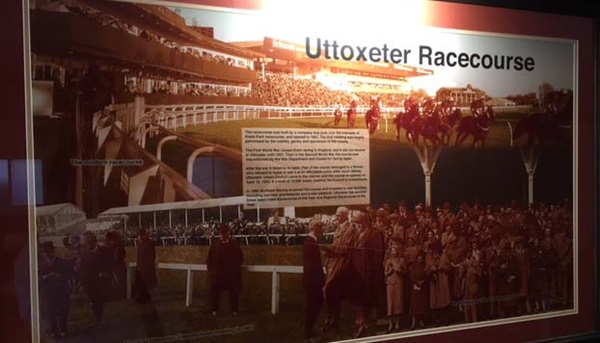
The text reads: The racecourse was built by a company that took over the interests of Keele Park racecourse, and opened in 1907. The first meeting was largely patronised by the nobility, gentry and sportsmen in the county.
The First World War closed down racing in England, and it did not resume at Uttoxeter until 1921.Then in the Second World War the course was requisitioned by the War Department and closed for racing again.
After the War it failed to re-open. Part of the course belonged to a farmer, who refused to lease or sell it at an affordable price. After much debate, Uttoxeter Urban Council came to the rescue, and the course re-opened on April 12, 1952. A crowd of 12,000 amply justified the council commitment.
In 1988 Northern Racing acquired the course and invested in new facilities, including two new grandstands and a new paddock. Uttoxeter has several times been voted Racecourse of the Year and Regional Racecourse of the Year.
Prints and text about Dr Johnson - the Prodigal Son.
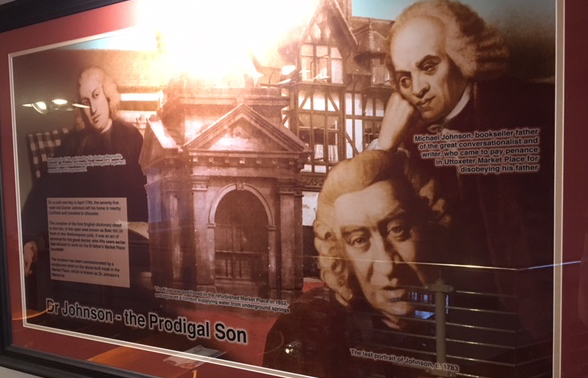
The text reads: On a cold wet day in April 1784, the seventy five year old Doctor Johnson left his home in nearby Lichfield and travelled to Uttoxeter.
The compiler of the first English dictionary stood in the rain, in the open area known as Bear Hill (in front of this Wetherspoon pub). It was an act of penance for the good doctor, who fifty years earlier had refused to work on his ill father’s Market Place bookstall.
The incident has been commemorated by a sculptured relief on the stone-built kiosk in the Market Place, which is known as Dr Johnson’s Memoria
Photographs and text about JCB.
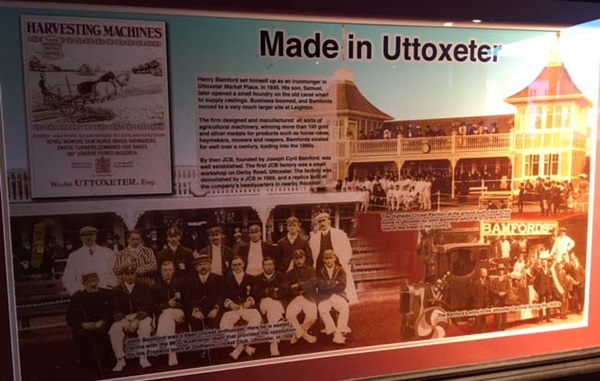
The text reads: Henry Bamford set himself up as an ironmonger in Uttoxeter Market Place, in 1845. His son, Samuel, later opened a small foundry on the old canal wharf to supply castings. Business boomed, and Bamfords moved to a very much larger site at Leighton.
The firm designed and manufactures all sorts of agricultural machinery, winning more than 100 gold and silver medals for products such as horse rakes, haymakers, mowers and reapers. Bamfords existed for well over a century, trading into the 1980s.
By then JCB, founded by Joseph Cyril Bamford, was well established. The first JCB factory was a small workshop on Derby Road, Uttoxeter. The factory was demolished by JCB in 1969, and a replica built at the company’s headquarters in nearby Rochester.
If you have information on the history of this pub, then we’d like you to share it with us. Please e-mail all information to: pubhistories@jdwetherspoon.co.uk